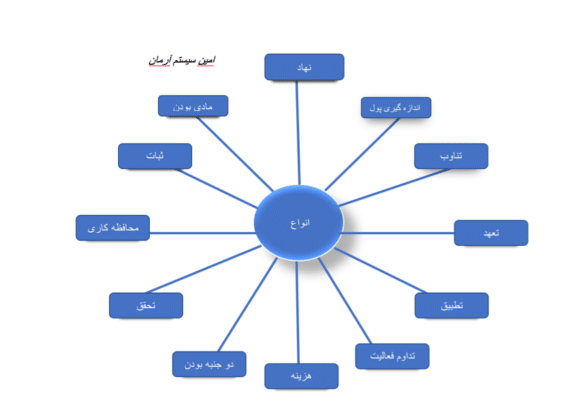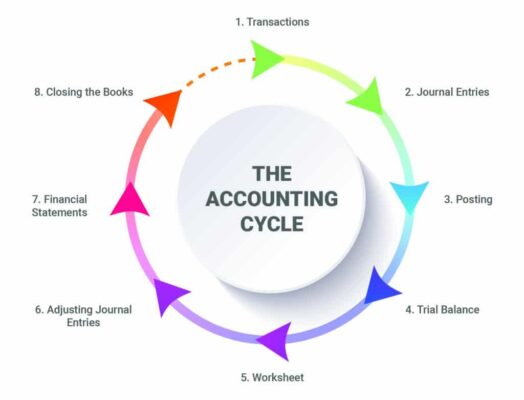امین سیستم آرمان آمیسا
تولید و ارائه نرم افزارهای مالی و اداریامین سیستم آرمان آمیسا
تولید و ارائه نرم افزارهای مالی و اداریحسابداری دولتی

حسابداری به فرآیند ثبت و مدیریت کلیه تراکنش های مالی انجام شده توسط دولت اطلاق میشود که شامل درآمد و هزینه آن می شود حسابداری دولتی کنترل شدید بر منابع دارد و هدف اصلی این نوع حسابداری برنامه ریزی و تصمیم گیری در مورد کنترل وجوه است.
واین وجوه دولتی شامل ۵ بخش میباشد:
۱: وجوه عمومی
۲: وجوه خدمات بدهی
۳: وجوه های درآمد ویژه
۴:وجوه های درآمد ویژه
۵: وجوه دائمی
اصول حسابداری دولتی :
حسابداری چه دولتی چه خصوصی هر کدام آن از خود بعضی اصول قاعده و قوانین های خاصی را دارد و حسابداری دولتی دارای سه اصول مهم میباشد که قرار ذیل اند :
۱:مرحله جمع آوری حسابداری
۲:مرحله پردازش حسابداری
۳:مرحله گزارش حسابداری
۱:مرحله جمع آوری حسابداری
اولین مرحله در چرخه حسابداری رخ میدهد و اولین فرآیند حسابداری جمع آوری داده هااست
هدف نهایی این مرحله تهیه گزارش های مالی است که وضیعت مالی یک کسب و کار را نشان میدهد و برای رسیدن به این هدف داده های مربوط به فروش، خرید و سایر معاملات مالی که در طول دوره مالی انجام میشود جمع آوری شود.
۲:مرحله پردازش حسابداری
مرحله ای است که موارد در سیستم حسابداری ثبت میشود.
ورودی های مجلات عمومی برای معاملات تجاری وارد می شود و سپس آن مبالغ به دفتر کل منتقل میشود.
ورودی مجله شامل بدهی نقدی و اعتباری است .
۳:مرحله گزارش حسابداری
مرحله گزارش حسابداری پایان چرخه حسابداری میباشد و در این مرحله است که گزارش های مالی یک کسب و کار بیشترین استفاده را میکند که به صورت سود و زیان ترازنامه و صورت حقوق با صاحبان سهام تکمیل میشود این مرحله صورت سود و زیان کل درآمد و هزینه های کسب و کار را برای دوره مالی تعین شده گزارش میکند.
Governmental Accounting
Accounting refers to the recording and management of all financial actions performed by the government, including its revenue and expenditure. Public Accounting Strict control over resources and the main purpose of this type of accounting is to plan and decide on funds control.
This government fund consists of 5 sections:
۱: General funds
۲: Debt service funds
۳: Special revenue funds
۴: Capital projects funds
۵: Permanent funds
Principles of government accounting:
Public or private accounting each has its own set of rules and regulations, and public accounting has three important principles, which are as follows:
۱: Accounting collection stage
۲: Accounting processing stage
۳: Accounting reporting stage
۱: Accounting collection stage
The first step in the accounting cycle occurs and the first accounting process is data collection
The ultimate goal of this stage is to prepare financial reports that show the financial condition of a business and to achieve this goal, data related to sales, purchases, and other financial transactions that are done during the accounting period are collected.
۲: Accounting processing stage
It is the stage where items are recorded in the accounting system.
Public journal entries are entered for commercial transactions and then those amounts are transferred to the general office.
Magazine entries include cash and credit debt.
۳: Accounting reporting stage
The accounting reporting stage is the end of the accounting cycle, and it is at this stage that most of a business unit’s financial statements are used, which are completed with shareholders in the form of profit and loss balance sheets and salaries. This stage is the profit and loss statement of total income and expenses. Which reports the business for a specified accounting period.
المحاسبة الحکومیة
تشیر المحاسبة إلى عملیة تسجیل وإدارة جمیع المعاملات المالیة التی تقوم بها الحکومة، والتی تشمل إیراداتها ونفقاتها. للمحاسبة العامة سیطرة صارمة على الموارد، والغرض الرئیسی من هذا النوع من المحاسبة هو التخطیط والبت فی رقابة وجوه.
تتکون هذه المیزانیة الحکومیة من ۵ أقسام:
۱:وجوه العامة
۲: وجوه خدمة الدین
۳: وجوه الإیرادات الخاصة
۴: وجوه المشاریع الرأسمالیة
۵: وجوه الدائمة
مبادئ المحاسبة الحکومیة:
لکل من المحاسبة العامة أو الخاصة مجموعتها الخاصة من القواعد واللوائح، والمحاسبة العامة لها ثلاثة مبادئ مهمة، وهی :
۱: مرحلة التحصیل المحاسبی
۲: مرحلة المعالجة المحاسبیة
۳: مرحلة إعداد التقاریر المحاسبیة
۱: مرحلة التحصیل المحاسبی
تحدث الخطوة الأولى فی دورة المحاسبة وأول عملیة محاسبیة هی جمع البیانات
الهدف النهائی من هذه المرحلة هو إعداد التقاریر المالیة التی تظهر الحالة المالیة للأعمال التجاریة ولتحقیق هذا الهدف، یتم جمع البیانات المتعلقة بالمبیعات والمشتریات والمعاملات المالیة الأخرى التی تتم خلال الفترة المحاسبیة.
۲: مرحلة المعالجة المحاسبیة
إنها المرحلة التی یتم فیها تسجیل العناصر فی نظام المحاسبة.
یتم إدخال القیود الیومیة العامة للمعاملات التجاریة ثم یتم تحویل هذه المبالغ إلى المکتب العام.
تشمل إدخالات المجلات الدیون النقدیة والائتمانیة.
۳: مرحلة إعداد التقاریر المحاسبیة
مرحلة إعداد التقاریر المحاسبیة هی نهایة الدورة المحاسبیة، وفی هذه المرحلة یتم استخدام البیانات المالیة للنشاط التجاری بشکل کبیر ، والتی یتم إکمالها فی شکل المیزانیة العمومیة للأرباح والخسائر وکشوف المرتبات مع المساهمین. هذه المرحلة هی بیان الأرباح والخسائر لإجمالی الدخل والمصروفات، یعرض الأعمال للفترة المحاسبیة المحددة.
منبع: amisa.co
سیستم مدیریت فرآیند کسب و کار BPMS

سیستم مدیریت فرآیند کسب و کار BPMS
بخشی یا رشته ای است که در آن افراد از سیستم مدیریت فرآیند کسب و کار روش های تخصصی برای کشف، مدل سازی ,تجزیه و تحلیل ,اندازه گیری ,بهبود ,بهینه سازی و خودکار سازی فرآیند های تجاری استفاده می کنند.
اکثر نرم افزار های حسابداری ویژه گی ها و قابلیت های بسیاری دارند از جمله سیستم خزانه داری سیستم خرید فروش سیستم انبار داری سیستم حقوق دستمزد وغیره… که این سیستم ها در نرم افزار حسابداری آمیسا موجود می باشد.
همچنین شرکت امین سیستم آرمان با توجه به سابقه درخشان در تولید نرم افزار های حسابداری که با نام تجاری آمیسا شناخته شده و در بیشتر سازمان ها و ارگان های دولتی و خصوصی از این نرم افزار حسابداری آمیسا استفاده می کنند که پاسخگوی تمام نیاز مدیران مجموعه ها بوده است.
امین سیستم آرمان با توجه به استقبال بی نظیر مدیران مجموعه ها در حال تولیدنرم افزاری BPMS میباشد که این نرم افزار دارای امکاناتی از قبیل:
۱:امکانات کد نویسی
۲:امکان رفع خطا های احتمالی
۳:حذف اطلاعات تکراری
۴:امکان هوشمند سازی فرآیند ها
۵:قابلیت دسترسی سریع به گزارشات مدیریتی
۶:قابلیت مدیریت آلا رم سیستمی
سیستم مدیریت فرآیند کسب و کار دارای سه بخش میباشد:
۱:سند محوری (document centric BPM)
۲:محور یکپارچه (integration centric BPM)
۳:انسان محوری (human centric BPM)
۱:سند محوری:
این فرآیند نقش مهمی در ایجاد ارزش برای سازمان ها می باشد.
سند محوری
۲:محور یکپارچه:
سیستم مدیریت کسب و کار یک رویکرد کاملا یک پارچه برای ساخت و ترویج برنامه های کاربردی دسکتاپ و اینترنت است که این امکان به روز رسانی آسان برنامه را فراهم می کند و قادر به ردیابی شرایط متغیر بازار است.
محور یکپارچه
۳:انسان محور:
انسان محور(BPM) یک فرآیند تجاری است که به مداخله انسانی نیاز دارد .ابتدا مهارت ها و فعالیت های انسانی را در نظر می گیرد و از عملکرد های خود کار برای پشتیبانی از آنها استفاده می کنند.
انسان محور
سیستم مدیریت فرآیند کسب و کار دارای ۴ مرحله می باشد:
۱:سند (document)
۲:ارزیابی (assess)
۳بهبود (improve)
۴:مدیریت (manage)
Business process management system
.A field or discipline in which people use business process management to use specialized methods to discover, model, analyze, measure, improve, optimize and automate business processes
…..accounting software has many features and capabilities such as treasury system, purchasing system, sales system, warehousing system, etc
These systems are available in Amisa accounting software. Also, Amisa system accounting company due to its brilliant history in the field of production accounting software, which is known as the Amisa brand, uses this Amisa accounting in most public and private organizations or organs which has met all the needs of manager collections.
Amin system Arman is producing a software called (BPMS) due to the unparalleled welcome to managers collections, which has features such as
۱: coding facilities
۲: the possibility of fixing possible errors
۳: delete duplicate information’s
۴: the possibility of intelligent processes
۵: the ability to quickly access management report
۶: the ability to manage systemic alarm
Business process management system is divided into 3 types:
۱: document-centric business process management system (DC BPMS)
۲: integration centric business process management system (IC BPMS)
۳: human-centric business process management system (HC BPMS)
۱: document-centric business process management system:
This process plays an important role in creating value for organizations.
۲: integration centric business process management system:
Business management is a fully integrated approach to building and promoting desktop and internet applications which allows for easy program updates and is able to track changing market conditions.
۳: human-centric business process management system:
Is a business process that requires human intervention it first considers human skills, activities and uses self-employed action to support them.
Business process management systems have 4 stages:
۱: document
۲: assess
۳: improve
۴: manage
دارایی ها assets
دارایی ها منبع ارزش اقتصادی است که یک فرد, شرکت یا کشور مالک آن است و یا آنرا کنترل می کند با این انتظار که در آینده منفعتی ایجاد کند.
دارایی ها به سه بخش تقسیم میشود که هر بخش به دو دسته دیگر طبقه بندی میشود:
۱:تبدیل پذیری (convertibility)
*دارایی های جاری (current assets)
*دارایی های ثابت (fixed assets)
۲:وجود فیزیکی (physical existing)
*دارایی های مشهود (tangible assets)
*دارایی های نا مشهود (intangible assets)
۳:کاربرد پذیر (usage)
*دارایی های عملیاتی (operating assets)
*دارایی های غیر عملیاتی (non-operating assets)
دارایی های جاری (Current assets)
داراییهای هستند که میتواند در مدت یک سال به وجه نقد تبدیل شوند مانند:
- پول نقد
- حساب های دریافتنی
- اوراق بهادار
- موجودی
- سرمایه گذاری کوتاه مدت
دارایی های ثابت (fixed assets)
داراییهای هستند که نمیتوان آنرا در مدت یک سال به وجه نقد تبدیل کرد مانند :
- اموال
- تجهیزات
- وسایل
- سرمایه گذاری بلند مدت
دارایی های مشهود (tangible assets)
داراییهای هستند که حضور فیزیکی دارند مانند:
- پول نقد
- وسایل نقلیه
- لوازم اداری
- تجهیزات
دارایی های نا مشهود (intangible assets)
داراییهای هستند که حضور فیزیکی ندارند ولی ارزش بلند مدتی را به یک شرکت ارائه میدهند مانند:
- علائم تجاری
- تحقق و توسعه
- تفاهیم
- شناخت برند
دارایی های عملیاتی (operating assets)
دارایی های هستند که کسب و کار شما را قادر میسازد که از طریق عملیات اصلی و یا روزانه کسب و کار شما ایجاد درآمد کند مانند:
- موجودی
- پول نقدی
- تجهیزات
دارایی های غیر عملیاتی (non-operating assets)
دارایی های هستند که نمیتوانیم از طریق عملیات اصلی یا روزانه کسب و کار خود درآمد داشته باشیم
اما ممکن است از طریق راه های دیگر ایجاد درآمد کند. مانند:
- اوراق بهادار
- سرمایه گذاری کوتاه مدت
- تجهیزات اضافی (جانبی)
مقالات مرتبط: دوره مالی
ASSETS
An asset is a source of economic value that an individual, company, or country Owens or controls in the expectation of making a profit in the future.
Assets are divided into three sections, each of which is classified into two categories.
Convertibility:
*current assets
*fixed assets (non-current)
Physical existence:
*tangible assets
*intangible assets
Usage:
* operating assets
*non-operating assets
۱:convertibility
*Current assets
There are assets that can be converted into cash within a year, such as:
- Cash
- Accounts receivable
- Securities
- Inventory
- Short-term investment
*Fixed assets (non-current assets)
There are assets that cannot be converted into cash in a year, such as:
- Property
- Equipment
- Tools
- Long-term investment
۲:Physical existence
*Tangible assets
There are assets that have a physical presence, such as:
- Cash
- Vehicles
- Office supplies
- Equipment
*Intangible assets
There are assets that do not have a physical presence but provide long-term value to a company, such as:
- Trademarks
- Realization and development
- Understanding
- Brand recognition
۳:Usage
*Operating assets
There are assets that enable your business to generate revenue through the main or day-to-day operations of your business, such as:
- Inventory
- Cash
- Equipment
*Non-operating assets
There are assets that we can not monetize through the core operations or day-to-day operations of our business
But it may generate revenue through other means such as
- Securities
- Short-term investment
- Additional equipment (spare)
منبع: amisa.co
مفاهیم حسابداری

مفاهیم حسابداری (Accountin concepts)
مفاهیم حسابداری مجموعه قرارداد های عمومی هستند که بنای ثبت معاملات تجاری و تهیه حساب های مالی می باشد.
اهداف حسابداری (objective of accounting concept)
دارای سه هدف مهم می باشد
هدف اول: اولین هدف در مفاهیم حسابداری که هدف اصلی به شمار می رود دستیابی یا دسترسی به ثبات و نگهداری صورت های مالی می باشد.
هدف دوم: این هدف کمک به حسابداران در تهیه و نگهداری سوابق تجاری می باشد.
هدف سوم: دسترسی به درک مشترک از قوانین یا اطلاعات است که باید توسط همه نوع موجودیت ها دنبال شود که در نتیجه اطلاعات مالی جامع و قابل مقایسه را آسان می کند.
۱۲ مفهوم برتر حسابداری
توضیح ۱۲ بخش مفاهیم حسابداری:
۱:مفهوم نهاد (Entity concept)
مفهوم نهاد نشان دهنده تفاوت بین کسب و کار یک شخص میباشد. که به عنوان نهاد جداگانه شناخته میشود و بیان میکند که معاملات مربوط به تجارت باید جدا از معاملات صاحبان واحد تجاری ثبت شود.
۲:مفهوم اندازه گیری پول (money measurement concept)
این بیان می کند که فقط معاملات به صورت پولی ثبت و اندازه گیری شود.
۳:مفهوم تناوب (periodicity concept)
تناوب بیان می کند که یک سازمان یا واحد تجاری میتواند نتایج مالی خود را در دوره های زمانی معین گزارش کند.
۴:مفهوم تعهدی (Accrual concept)
بر اساس حسابداری تعهدی معامله به صورت تجاری ثبت میشود و یا به عبارتی دیگر معاملات همان طور که اتفاق میافتد ثبت میشوند.
۵:مفهوم تطبیق (matching concept)
مفهوم تطبیق بیان می کند در دوره ای که درآمد در نظر گرفته شده است واحد تجاری فقط باید هزینه های مربوط به آن دوره را در نظر بگیرد.
۶:تداوم فعالیت (going concern concept)
یک اصطلاح حسابداری برای شرکت است که از نظر مالی به اندازه کافی پایدار است و می تواند تعهدات خود را انجام دهد و به تجارت خود برای آینده قابل پیش بینی ادامه بدهد.
۷:مفهوم هزینه (cost concept)
بیان می کند که تمامی موارد به دست آمده مانند دارایی ها یا اقلام مورد نیاز برای هزینه کردن باید در بخش هزینه ثبت شود و در دفاتر نگهداری شود.
۸:مفهوم تحقق (realization concept)
این مفهوم با مفهوم هزینه مرتبط است که واحد تجاری باید دارایی را به بهای تمام شده ثبت کند.
۹:مفهوم دو جنبه (dual aspect concept)
این مفهوم بیان میکند که هر ترا کنش دارای دو جنبه بدهکار و بستانکار میباشد.
۱۰:محافظه کاری (conservatism)
مفهوم محافظه کاری بیان میکند که واحد تجاری باید دفتر حساب های خود را محتاطانه تهیه و نگهداری کند.
۱۱:ثبات (consistency)
مفهوم ثبات در حسابداری یک مفهوم است که شرکت ها باید از روش های حسابداری یکسان برای ثبت معاملات مشابه در طول زمان استفاده کنند.
۱۲:مادی بودن (materiality)
مفهوم مادی بودن نشان میدهد که صورت های مالی باید تمام موارد را نشان دهد که تاثیر اقتصادی مهمی بر تجارت دارند.
شرکت امین سیستم آرمان با ارائه نرم افزار حسابداری که با نام تجاری آمیسا قابل ارائه می باشد، توانسته نیاز بسیاری از حسابداران را برآورده کند، اکنون از این نرم افزار حسابداری در بسیاری از ارگانهای و سازمانهای بزرگ و کوچک استفاده میشود و توجه بسیاری از مدیران مجموعه ها را به خود معطوف کرده است.
Accounting concept
Accounting concepts are a set of public contracts that are used to record business transactions and prepare financial accounts.
(objective of accounting concept)
The first goal: The first and main goal is to achieve or achieve stability and maintenance of financial statements.
The second goal: This objective is to assist accountants in preparing and maintaining business records.
The third goal: is to gain access to a common understanding of the rules or information that must be followed by all types of entities, thus facilitating comprehensive and comparable financial information.
Top 12 concepts of accounting:
۱: Entity concept:
The concept of institution represents the difference between business and person.
Which is known as a separate entity and states that business-related transactions must be recorded separately from those of business unit owners.
۲: money measurement concept
This means that only transactions can be recorded and measured in monetary terms.
۳: periodicity concept
Periodicity states that an organization or business unit can report its financial results at regular intervals.
۴: Accrual concept
According to accrual accounting, a transaction is recorded commercially, or in other words, transactions are recorded as they occur.
۵: matching concept
The concept of matching states. In the period in which revenue is considered, the entity should only consider the costs associated with that period.
۶: going concern concept:
It is an accounting term for a company that is financially sound enough to be able to meet its obligations and continue its business for the foreseeable future.
۷: Cost concept
It states that all items obtained, such as assets or items required for spending, must be recorded in the expense section and kept in the offices.
۸: realization concept
This concept is related to the concept of cost that the business unit must record the asset at cost.
۹: dual aspect concept
This concept states that each transaction has two aspects, debtor and creditor.
۱۰: Conservatism
The concept of conservatism implies that a business unit should prepare and maintain its ledger on a prudent basis.
۱۱: consistency
The concept of consistency in accounting is a concept that companies must use the same accounting methods to record similar transactions over time.
۱۲: materiality
The concept of materiality suggests that financial statements should reflect all matters that have a significant economic impact on trade.
منبع: amisa.co
دوره مالی
دوره مالی (Financial period)
دوره مالی دوره ای است که عمومأ واحد های تجاری جهت گزارش های مالی سازمان یا شرکت خود از این دوره استفاده می کنند. که این دوره در بیشتر کشور ها شامل ۱۲ ماه می باشد .
ولی طبق تحقیقات سال جاری که توسط سازمان بینالمللی گزارش گری مالی انجام شده است گفته میشود. که ایالات متحده ( USA ) و کشور بریتانیا ( UK ) سال های مالی شان را ۵۳ هفته طبق اصول حساب داری پذیرفته اند.
دوره مالی یا (Financial period) به دو بخش تقسیم میشود:
۱:سال مالی (fiscal year)
۲:سال تقویم (calendar year)
سال مالی (fiscal year)
این سال مالی دوره ای است که در بخش های حسابداری دولتی مورد استفاده قرار میگیرد. و این دوره سال مالی برای هر کشور متفاوت میباشد. سال مالی مربوط به بودجه یک شرکت میباشد. که میتواند از هر قسمت سال آغاز شود.
سال تقویم(calendar year)
این تقویم سال شامل دوره ای از حسابداری میباشد که از ابتدای سال (فروردین) آغاز و آخر سال (اسفند) ختم میشود و این سال تقویم برای هر کشوری فرق دارد.
فرق بین سال مالی (Fiscal year) و سال تقویم (calendar year)
سال تقویم از اول سال آغاز و آخر سال خاتمه می یابد ولی سال مالی امکان دارد از هر قسمت سال آغاز شود به شرط اینکه ۱۲ ماه کامل شود. و یا به شرح واضح تر میتوانیم بگویم که سال مالی میتواند از وسط سال آغاز و تا وسط سال دیگر خاتمه یابد.
دوره مالی دارای ۸ مرحله میباشد :
- تراکنش یا معامله (Transaction)
- ورودی های مجله (Journal entries)
- ارسال به دفترکل (posting to general ledger)
- تراز آزمایشی (Trial balance)
- کاربرگ (Worksheet)
- تنظیم ورودی ها (Adjusting entries)
- صورت های مالی (Financial statements)
- بسته شدن (closing)
۱:معامله، تراکنش (Transaction):
تراکنش ها برای پیگیری بدهی ها، فروش ها، خرید ها و کسب دارائی ها بکار میرود.
۲: ورودی های مجله (Journal Entries):
بعد از تنظیم تراکنش مرحله بعدی ورودی های مجله میباشد که ثبت این ورودی ها در یک شرکت به ترتیب زمانی صورت میگیرد که این ورودی ها شامل: بدهکار (Debtor) و بستانکار (creditor) می شود.
۳:ارسال به دفترکل (posting to general ledger):
مرحله بعد ارسال به دفترکل میباشد و همه اطلاعات که در ورودی مجله بدست آمده است باید به دفترکل پُست شود.
۴: ترازآزمایشی (Trial Balance):
در این بخش کل موجودی حساب های یک شرکت محاسبه میشود.
۵:کاربرگ(worksheet):
خطا های که در بین حساب های بدهکار و بستانکار بوجود آمده است توسط این بخش بازیابی میشود.
۶:تنظیم ورودی ها (Adjusting Entries)
این بخش برای راهنمایی اصلاح ورودی ها ،درآمدها و هزینه های تأخیر افتاده استفاده میشود.
۷:صورت های مالی (Financial statements):
توسط این بخش سود، زیان و جریان نقدی یک شرکت را میتوان بررسی کرد .
۸:بسته شدن (closing)
این بخش شامل انتقال اطلاعات از حساب های موقت در صورت سود و زیان به حساب های دائمی در ترازنامه است که در پایان دوره حسابداری ثبت میشود.
Financial period
The Financial period is the period that business units generally use for the financial statements of their organization or company.
This period includes 12 months in most countries.
But according to this year’s research conducted by the International Financial Reporting Organization. That the United States (USA) and the United Kingdom (UK) have accepted their fiscal years 53 weeks according to accounting principles.
Financial period is divided into two parts:
۱: fiscal year
۲: calendar year
۱: Fiscal year:
This is the fiscal year used in government accounting. And this period of the fiscal year is different for each country. The financial year is related to the budget of a company. Which can start from any part of the year.
۲: Calendar year:
This calendar includes an Financial period that begins at the beginning of the year (April) and ends at the end of the year (March).
And this year of calendar is different for each country.
Difference between (fiscal year) and (calendar year):
The calendar year begins at the beginning of the year and ends at the end of the year, but the fiscal year may begin at any time of the year as long as 12 months are completed. Or to be more precise, the fiscal year can start in the middle of the year and end in the middle of another year.
Periodic accounting has 8 stages:
۱: transaction
۲: journal entries
۳: posting to general ledger
۴: trial balance
۵: worksheet
۶: Adjusting entries
۷: Financial statement
۸: closing
۱: Transaction
Transactions are used to track debts, sales, purchases and acquisitions of assets.
۲: Journal entries
After setting the transaction, the next step is the journal entries, which are registered at certain time in a company, respectively, when these entries include: ( debtor )and ( creditor ).
۳: posting to the general ledger
The next step is to send it to the general office and all the information in the journal entry should be posted to the general office.
۴: Trial balance
In this section, the total balance of a company’s accounts is calculated.
۵: Worksheet
Errors between debtor and creditor accounts are recovered by this section.
۶: Adjusting entries
This section is used to guide the correction of overdue inputs, revenues and expenses.
۷: Financial Statements
With this section, the profit, loss and cash flow of a company can be examined.
۸: Closing
This section includes the transfer of information from temporary accounts in the event of a profit or loss to permanent accounts on the balance sheet, which is recorded at the end of the accounting period.
منبع: amisa.co




